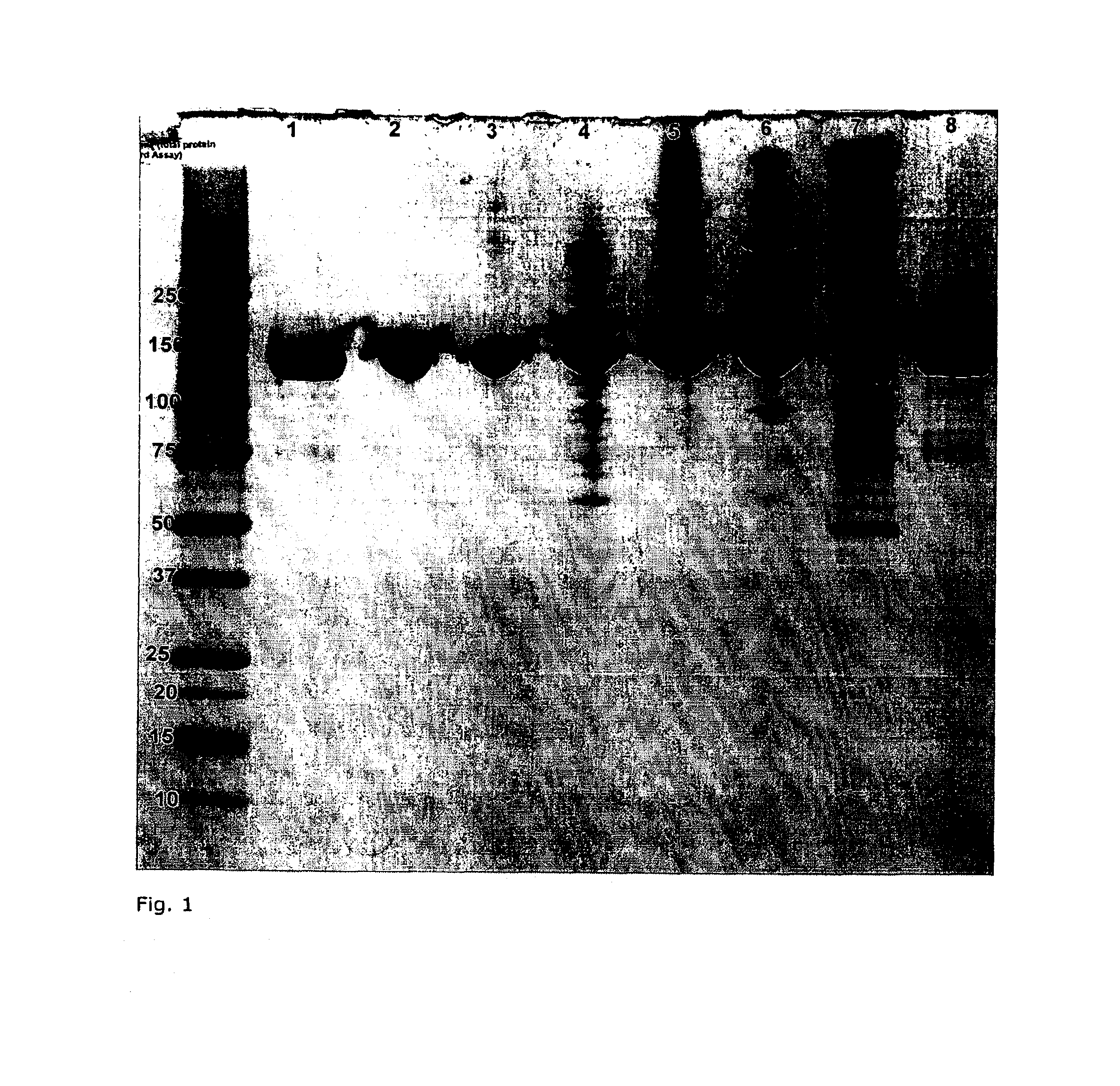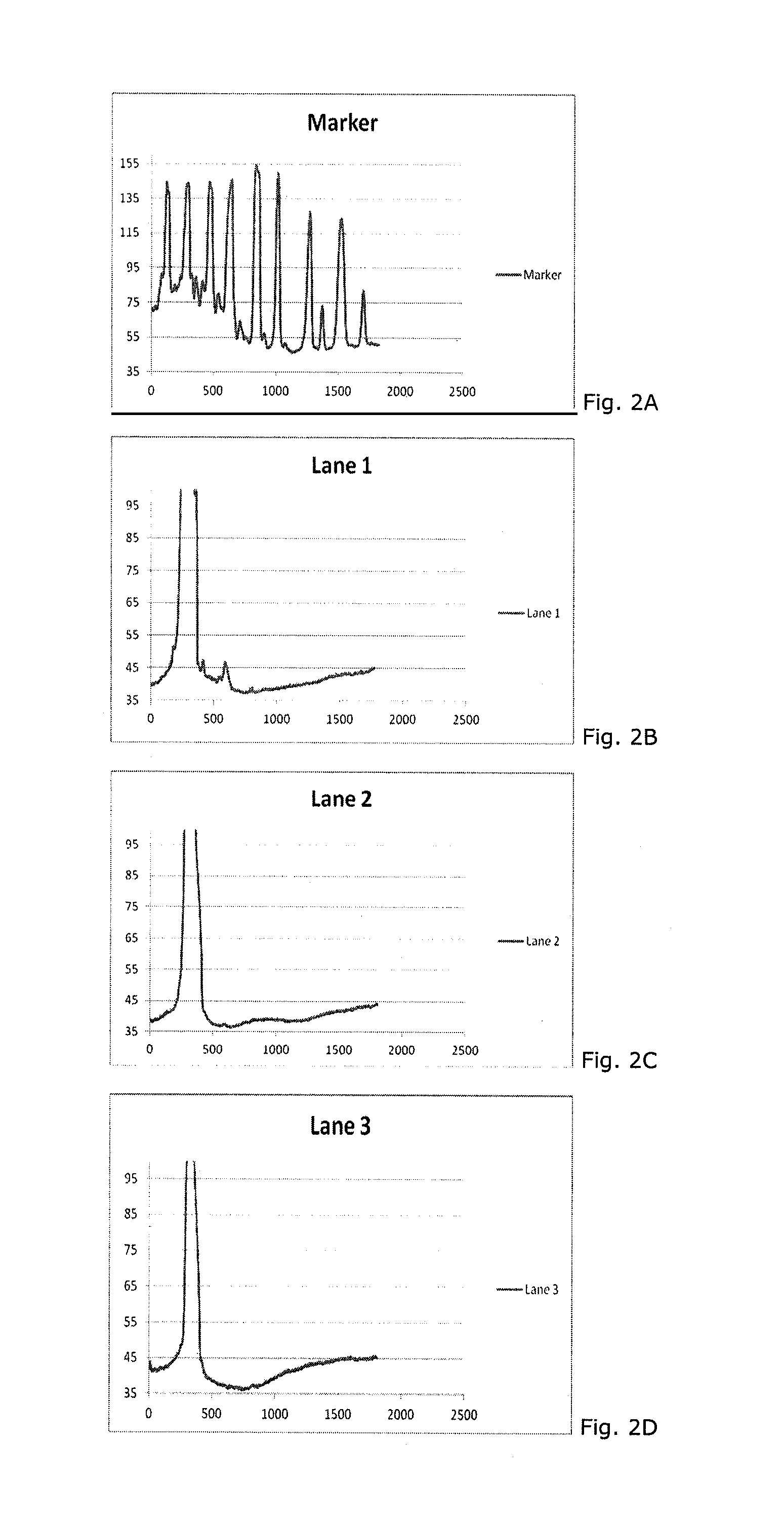Method for purification of complement factor H
a technology of complement factor and purification method, which is applied in the separation of animal/human proteins, mammal proteins, and component separation, etc., can solve the problems of legal blindness of the elderly population, no treatment for dry form of age-related macular degeneration,
- Summary
- Abstract
- Description
- Claims
- Application Information
AI Technical Summary
Benefits of technology
Problems solved by technology
Method used
Image
Examples
example 1
[0076]Factor H containing caprylate precipitate was dissolved at about 4° C. in a buffer comprising 20 mM tri-sodium citrate, 60 mM glycine, 10 mM ethylene diamine tetra acetate (EDTA), 10 mM ethylene glycol tetraacetic acid (EGTA), pH 7.4. Centrifugation at 4° C. for 20 minutes at about 5050 rpm, representing about 8000 g, separated non-dissolved material from supernatant.
[0077]The resultant supernatant was subsequently exposed to solvent / detergent (S / D) treatment. Therein, the supernatant is mixed with 0.3% (w / w) tri-n-butyl phosphate (TnBP) and 1% (w / w) Triton® X-100 (polyethylene glycol p-(1,1,3,3-tetramethylbutyl)-phenyl ether) for 60 minutes at room temperature.
[0078]The solution was adjusted with 0.3N HCl to a pH of 6.0 and diluted to a conductivity of 4.8 mS / cm at a temperature of 23° C. and filtered over 0.45 μm membranes. The filtered solution was subsequently applied to Toyopearl® SP-650M of Tosho. After sample application at room temperature weakly adsorbed proteins were...
example 2
[0083]Essentially the same process as displayed in example 1 was performed but with slight deviations in temperatures of 1-2° C. and introduction of 20 nm nanofiltration at a Factor H concentration of 3 mg / ml as no blocking of filters was encountered it is obvious that nanofiltration at higher concentration is possible and desirable.
example 3
[0084]Example 3 was essentially performed like example 1 but with a modified S / D treatment, namely 4 hours at 4° C., and heparin affinity chromatography introduced after ceramic hydroxyl-apatite chromatography. The complement Factor H containing fraction from ceramic hydroxyl-apatite chromatography was subjected to ultra / diafiltration for buffer exchange with a buffer comprising 20 mM tri-sodium citrate at pH 6.0 with a conductivity of 4.6 mS / cm at 23° C. and was afterwards submitted onto Heparin Sepharose® FF. After washing of gel and adsorbed complement Factor H with 5 column volumes of equilibration buffer, i.e. the same buffer as used for the buffer exchange, complement Factor H was eluted by addition of 0.2M NaCl to this buffer. Those fractions which eluted with the elution buffer were formulated and concentrated to 50 mg / ml.
PUM
| Property | Measurement | Unit |
|---|---|---|
| concentration | aaaaa | aaaaa |
| pH | aaaaa | aaaaa |
| conductivity | aaaaa | aaaaa |
Abstract
Description
Claims
Application Information
 Login to View More
Login to View More - R&D
- Intellectual Property
- Life Sciences
- Materials
- Tech Scout
- Unparalleled Data Quality
- Higher Quality Content
- 60% Fewer Hallucinations
Browse by: Latest US Patents, China's latest patents, Technical Efficacy Thesaurus, Application Domain, Technology Topic, Popular Technical Reports.
© 2025 PatSnap. All rights reserved.Legal|Privacy policy|Modern Slavery Act Transparency Statement|Sitemap|About US| Contact US: help@patsnap.com


